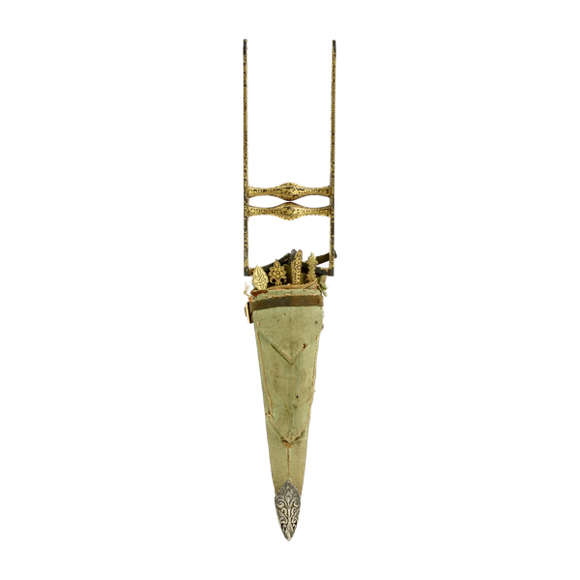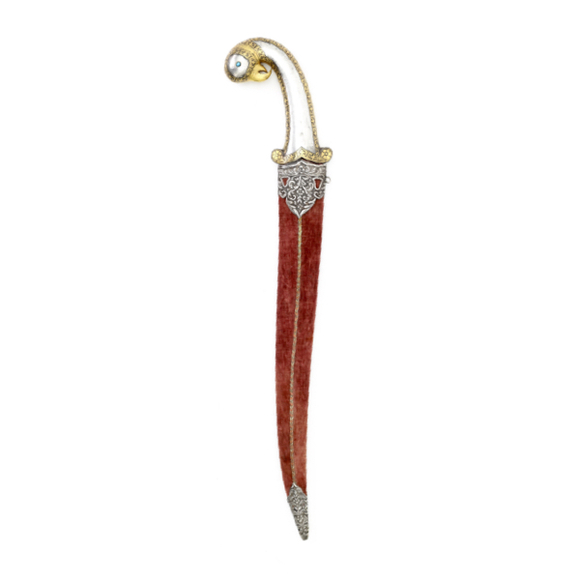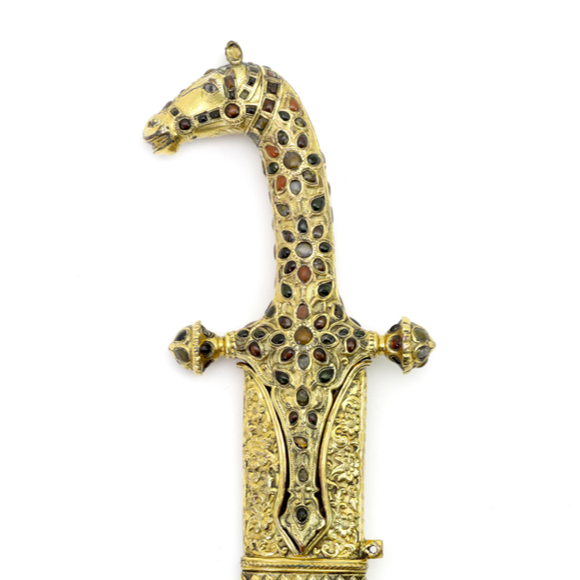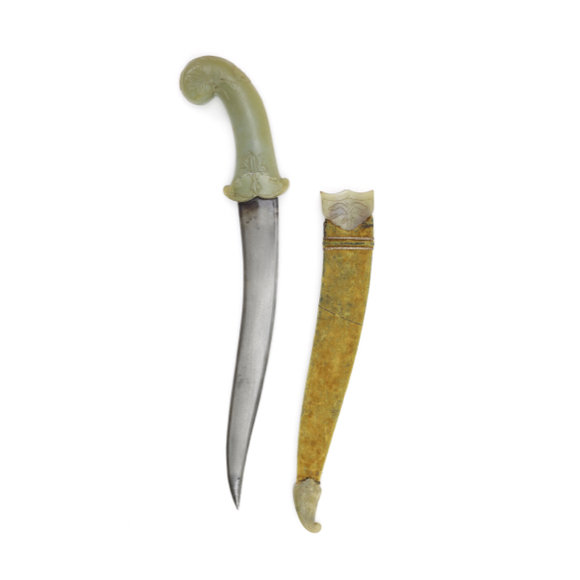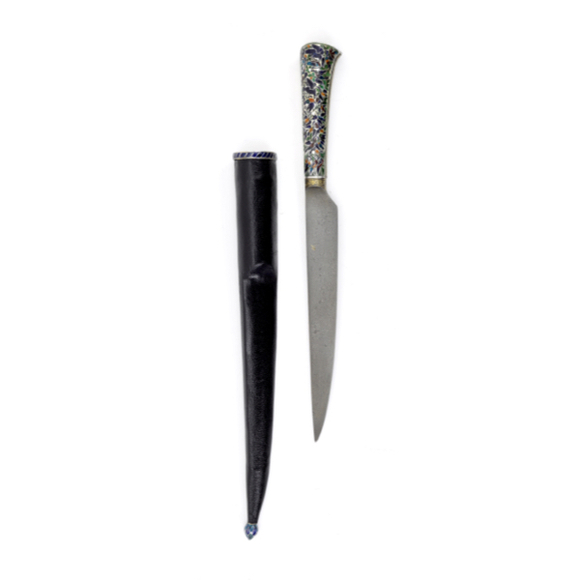With a fine wootz blade with a pronounced center ridge.

87 cm
78 cm
(to center crossguard)
Base 6.5 mm
Middle 5 mm
Start backedge 4.5 mm
5 cm from tip 3 mm
Base 34 mm
Middle 32.5 mm
Start backedge 35 mm
999 grams
20 cm from crossguard
Iron, steel, resin, gold
North India
18th century
The Fraser family
Bonhams
A London dealer
Introduction
This talwar comes from the Fraser brothers, passed down in their family. They were known primarily in the art world for the famous "Fraser album", a series of paintings commissioned by top Delhi artists that depict North India and Indian life during his time. It was the start of a genre now known as the Company style. The album is now scattered over a number of private and institutional collections.1
James Baillie Fraser (1783-1856) was an artist and travel writer who wrote, among others: Narrative of a journey into Khorasan, in the years 1821 and 1822 and Travels and Adventures in the Persian Provinces of the Southern Banks of the Caspian Sea.2
His brother William Fraser (1784-1835) was a spirited British civil servant, involved in various battles, and the first to recruit Ghurkas for the British army. He had various scars, including two saber cuts on the arm, a wound from a pike in the back, and an arrow that was shot through his neck.3
When his brother James visited William's place in Delhi in March 1815 he noted:
"Certainly William's house is a curiosity. Tygers' skins, caps of Tyger's heads, saddle cloths of ditto, quantities of saddlery, matchlocks, bows and arrows, quivers, belts, armour, guncases. All his guns and swords had gone to Nahan for him being with the army. Persian books and curiosities of all sorts filled up the place. I shall certainly get hold of some of these things and convey them from India to Inverness" 4
And apparently, he did. Among those items were possibly two talwar that I now have. James left India in 1820, which would mean they date either from before that or perhaps some of William's belongings were sent after his passing in 1835. Per my knowledge, there is no indication that James Fraser ever owned or collected Indian arms.
Notes to introduction
1. Mildred Archer and Toby Falk; India Revealed, the Art and Adventures of James and William Fraser 1801-35. Cassell, London, New York, Sydney.
2. Both available on archive.org: Narrative of a journey into Khorasan, in the years 1821 and 1822 & Travels and Adventures in the Persian Provinces of the Southern Banks of the Caspian Sea.
3. Mildred Archer and Toby Falk; India Revealed, the Art and Adventures of James and William Fraser 1801-35. Cassell, London, New York, Sydney. Page 22.
4. Fraser Papers, B3. (Kept by the Fraser family.)
This example
A typical example of an Indian talwar, the curved blade slightly hollow ground and with a long back bevel. Blade with pitting but now in stable condition. Hints of a laminated construction with high carbon edge can be seen here and there.
The iron hilt is deeply chiseled to reveal raised flower patterns in the typical Mughal aesthetic, over a stippled background. The flowers were overlaid with gold, now partly worn.
A slightly differently shaped hilt but with similar decoration can be found in Hendley; Memorials of the Jeypore Exhibition 1883.

Hendley; Memorials of the Jeypore Exhibition 1883, vol II, plate XXXII.
It was from the armory of the Nawab (viceroy) of Tonk, but such armories often held a wide range of items from different localities. Interesting is that it was said to have been 125 years old, writing in 1883 which means it's from around 1758.
I would tend to think this talwar also already had some age when Fraser acquired it, and probably dates from around the same period. By the early 19th century, when he was in India, you don't see this bold floral work anymore on talwar hilts.

Conclusion
An interesting example of an 18th-century talwar. Its a heavy, practical example that suits the taste of action-man William Fraser who liked to be in the heat of things. The piece is not in the best condition, but the relatively early date and interesting provenance could make up for that.
















The style typical of Kutch, the execution far above what is normally seen on work from that area.
Nice and complete with opaque green hilt and scabbard mounts.
With designs of animals, often attributed to Lucknow, north India.

